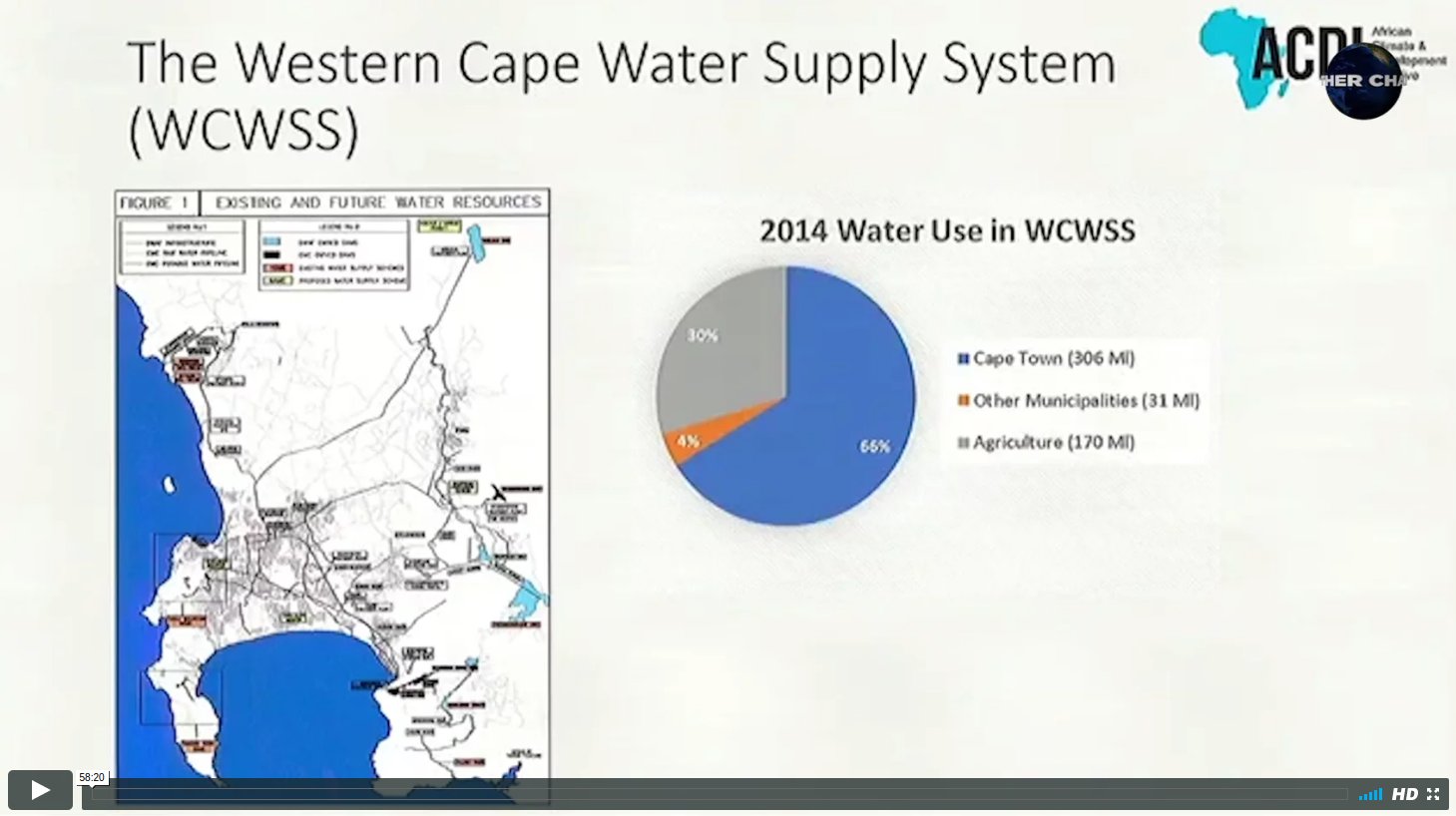- Live Stream
- Climate Change
- ENN
- Environmental Info
- Green Business
- Green Solutions
- Beautiful World
- Categories
- Articles
- Arctic & Glaciers
- Polar Regions and Glacier Reports
- Ethical Dimensions
- Global Warming
- Peatlands & Wetlands
- ENN – The Environmental News Network
- Agriculture
- Chemicals
- Conservation
- Fish Crime
- Forests
- Health
- Mountains
- Oceans
- Energy
- Money
- Green or Gone
- Nutrition
- Permaculture
- Various Solutions
- Powerful
- Watch This
- Water
- Breaking News
- Series ENN
HomeEnvironmental InfoWaterWater Scarcity and Drought in the Cape ~ Water, Water Everywhere….. not a drop to drink!
Water Scarcity and Drought in the Cape ~ Water, Water Everywhere….. not a drop to drink!
In this 2017 UCT Summer School Series, Day 4 ~ Prof. Mark New, Director and Pro Vice-Chancellor at African Climate & Development Initiative (ACDI), UCT (BSc. (Hons.), MPhil, PhD) presents on Water Security: the Global Hydrological cycle, Effects on water resource catchment areas, Water Security, Supply scarcity and climate change in South Africa, specifically Cape […]
CLOSE






What I would really like to know is what the population of the Western Cape has risen to over the past ten years because I would surmise that not only has the rainfall diminished, but the demand for water has greatly increased. There was a time when the Western Cape from Cape Town to Langebaan was open countryside so that when the Spring flowers blossomed, the landscape was transformed. Now the landscape is disfigured with thousands of little signs saying “For sale”. All these plots presumably have to be serviced, and that includes water and water mains. Further south, houses have been built at higher and higher levels, necessitating higher pressures in the pipes, which then burst. When that happened, they were usually repaired within 24 to 48 hours. Not any more. What is needed is a much more urgent approach to the water supply, including desalination and water extraction from the atmosphere. The water is all there. All we need is to collect it.